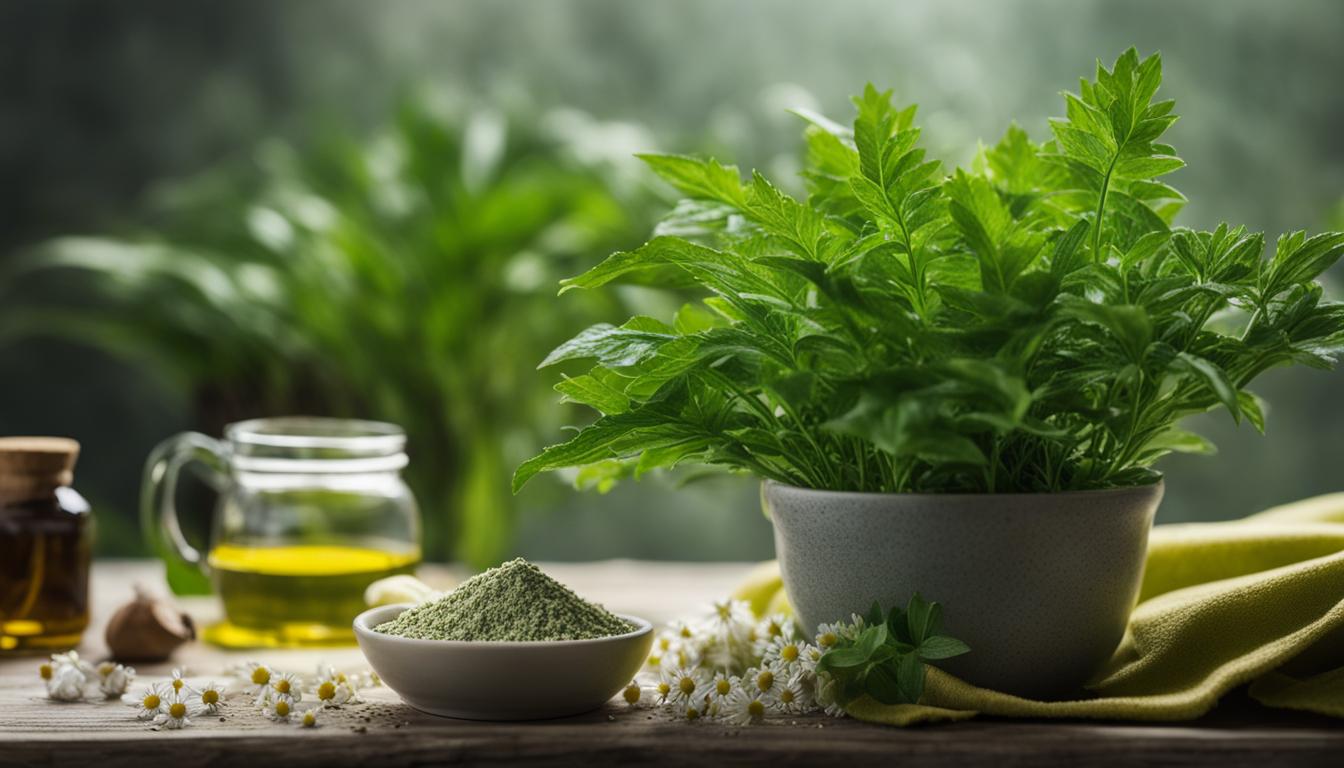
Greetings! As a plant enthusiast and advocate for eco-friendly gardening, I’m excited to share some effective natural remedies for Bacterial Leaf Spot. This common plant disease caused by bacteria can wreak havoc on your beloved plants, but fear not! There are plenty of organic solutions and home remedies that can help you prevent and manage Bacterial Leaf Spot naturally.
But first, let’s understand what Bacterial Leaf Spot is and what causes it. Bacterial Leaf Spot affects various plants, including stone fruit trees, tomatoes, peppers, and ornamental plants. It manifests as brown or black water-soaked spots on the leaves, often with a yellow halo. These spots can enlarge and merge, causing yellowing, withering, and drop of leaves. The disease can also affect the fruit, resulting in spotted or sunken brown areas.
To effectively control Bacterial Leaf Spot, it’s crucial to adopt preventive measures and implement natural remedies. Practices such as selecting resistant plant varieties, keeping the soil clean, improving air circulation, and using preventive sprays can make a significant difference.
In this article, I will guide you through the symptoms, prevention methods, and natural remedies for Bacterial Leaf Spot, providing you with valuable insights to keep your plants healthy and thriving.
Key Takeaways:
- Bacterial Leaf Spot is a plant disease caused by bacteria that affects various plants, causing brown or black water-soaked spots on the leaves.
- Prevention and control involve practices such as selecting resistant plant varieties, keeping the soil clean, improving air circulation, and using preventive measures like sprays with baking soda or neem oil.
- Natural remedies for Bacterial Leaf Spot include baking soda solution, neem oil, sulfur sprays, copper-based fungicides, SERENADE Garden, and Bonide Garden Dust.
- Other home remedies, such as the Garden Blight Remedy and the Leaf Spot Remedy, can also be effective in managing plant diseases.
- Remember to follow instructions for proper and safe use of natural remedies and maintain good hygiene practices in your garden.
What is Bacterial Leaf Spot?
Bacterial Leaf Spot is a common plant disease caused by bacteria that affects various plants, including crops like tomato, pepper, lettuce, cabbage, and potato, as well as ornamental plants like astilbe, chrysanthemum, and zinnia.
The disease is characterized by the presence of small water-soaked spots on the leaves, which eventually turn brown and necrotic. These spots can significantly damage the affected plants and lead to a reduction in crop yield.
Bacterial Leaf Spot can have a devastating impact on plants, causing reduced yield and quality. It is important to identify and address the disease early to prevent further spread and damage. Now that we understand what Bacterial Leaf Spot is, let’s take a closer look at the factors that cause this plant disease.
What causes Bacterial Leaf Spot?
Bacterial Leaf Spot is caused by bacterial pathogens, including Xanthomonas campestris and Pseudomonas syringae, which infect the leaves of plants. These bacteria can spread through various means, including water, wind, infected soil or plant debris, and even mechanical injury to the leaves.
The disease is more prevalent in humid or wet conditions, making it crucial to manage moisture levels to prevent its occurrence.
To gain a better understanding of Bacterial Leaf Spot, it is important to recognize its symptoms and how they manifest on affected plants.
What causes Bacterial Leaf Spot?
Bacterial Leaf Spot is caused by bacterial pathogens, specifically X. campestris or P. syringae, which infect the leaves of various plants. These bacteria can spread through different means, including water, wind, soil, plant debris, and even mechanical injury to the leaves.
The infection is more prevalent in humid or wet conditions, when the bacteria are more likely to thrive and spread.
The bacteria can enter the plant through natural openings like stomata or wounds on the leaves caused by insects, pruning, or harsh weather conditions. Once inside, they multiply and cause damage to the plant’s cells, resulting in the characteristic symptoms of Bacterial Leaf Spot.
Environmental factors like high humidity and moisture facilitate the infectious spread of these bacterial pathogens. The presence of water on the leaves, whether from rain, irrigation, or dew, can provide an ideal environment for the bacteria to grow and spread.
Wind can also carry the bacteria from infected plants to healthy ones, while contaminated soil or plant debris can serve as a reservoir for the pathogens.
What causes Bacterial Leaf Spot?
| Causes | Methods of Spread |
|---|---|
| Xanthomonas campestris | Water, wind, soil, plant debris |
| Pseudomonas syringae | Water, wind, soil, plant debris |
| Mechanical injury to leaves | Physical contact, insects |
| Humid conditions | Favorable environment for bacterial growth |
| Wet conditions | Facilitates spread of bacteria |
Understanding the causes and spread of Bacterial Leaf Spot is essential for implementing effective prevention and control measures. By identifying and addressing the factors that contribute to the disease, gardeners and growers can minimize the risk and impact of this plant infection.
Symptoms of Bacterial Leaf Spot
The symptoms of Bacterial Leaf Spot are key indicators that help identify the presence of this plant disease. By understanding these symptoms, you can take appropriate measures to prevent the further spread of the disease and protect your plants.
Water-Soaked Spots
One of the primary symptoms of Bacterial Leaf Spot is the appearance of small, water-soaked spots on the leaves. These spots are initially brown or black and may have a yellow halo surrounding them.
Brown or Black Spots
Over time, the water-soaked spots on the leaves will turn brown or black. These spots can vary in size and shape, with some spots merging together under wet conditions. The affected leaves may also exhibit a wilted appearance.
Yellowing of Leaves and Premature Leaf Drop
As the disease progresses, the leaves surrounding the spots may start to yellow. This yellowing can extend beyond the affected areas. In severe cases, the infected leaves may prematurely drop from the plant, further compromising its health.
Large Irregular Patches and Oily Sheen
If left unmanaged, Bacterial Leaf Spot can cause the spots to merge, forming larger irregular patches on the leaves. In some instances, you may notice an oily sheen on the affected areas.
Prevalence on Lower Leaves
Generally, Bacterial Leaf Spot is more commonly observed on the lower leaves of the plant. As the disease progresses, it can spread to the upper portions of the plant as well.
By recognizing these symptoms, you can promptly address the presence of Bacterial Leaf Spot and implement the necessary measures to control and prevent its further spread.
| Common Symptoms of Bacterial Leaf Spot | |
|---|---|
| Water-soaked spots on leaves | X |
| Brown or black spots | X |
| Yellowing of leaves | X |
| Premature leaf drop | X |
| Large irregular patches | X |
| Oily sheen on spots | X |
| Prevalence on lower leaves | X |
Control and Prevention of Bacterial Leaf Spot
When it comes to managing Bacterial Leaf Spot, there are several control and prevention measures that can be taken. These strategies aim to reduce the spread of the disease and minimize its impact on plants. By implementing these practices, you can help maintain healthy, disease-free plants in your garden.
Disease-Free Seed and Plant Selection
One of the first steps in preventing Bacterial Leaf Spot is to start with disease-free seed or plants. This reduces the risk of introducing the bacteria to your garden.
Look for certified disease-free seed or purchase plants from reputable sources. Choosing resistant plant varieties is also beneficial, as they are less susceptible to Bacterial Leaf Spot.
Good Air Circulation
Proper air circulation is essential for preventing Bacterial Leaf Spot. It helps to reduce humidity and moisture levels, creating an environment that is less favorable for the growth and spread of bacteria.
To promote good air circulation, avoid overcrowding plants and provide sufficient spacing between them. Regular pruning and staking can help improve air movement around the foliage.
Avoid Overhead Watering and Remove Infected Plant Material
Overhead watering, such as using sprinklers or sprays, can promote the spread of Bacterial Leaf Spot. Instead, water plants at the base or use drip irrigation to keep the foliage dry. This reduces the chances of the bacteria splashing onto the leaves.
It is also important to promptly remove and destroy any infected plant material, including leaves and stems. This helps to prevent the bacteria from spreading and infecting healthy plants.
Hand Hygiene and Crop Rotation
Practicing good hand hygiene is crucial in preventing the spread of Bacterial Leaf Spot. Wash your hands thoroughly before and after handling plants, especially if you suspect any infections. Practicing crop rotation can help break the disease cycle.
Avoid planting the same species in the same location for at least three years to reduce the chances of Bacterial Leaf Spot recurring.</p>
Use of Copper-Based Fungicides and Bactericides
In cases where preventive measures are not sufficient, using copper-based fungicides or other natural or synthetic bactericides can help control Bacterial Leaf Spot. These products are formulated to target and kill the bacteria responsible for the disease.
Follow the instructions provided with the products for proper and safe use. It is important to note that frequent or excessive use of these chemicals can have negative impacts on beneficial insects and the environment, so use them judiciously and as a last resort.

Natural Remedies for Bacterial Leaf Spot
Managing Bacterial Leaf Spot can be challenging, but there are several natural remedies that can help control and prevent the disease. These remedies are effective and eco-friendly alternatives to chemical-based treatments. Here are some natural remedies you can try:
Baking Soda Solution:
Using a baking soda solution is a popular natural remedy for Bacterial Leaf Spot. Mix 1 tablespoon of baking soda with 1 quart of water and spray it on the affected plants. The baking soda solution helps create an alkaline environment that prevents the growth of the bacteria causing Bacterial Leaf Spot.
Neem Oil:
Neem oil is another effective natural remedy for Bacterial Leaf Spot. Dilute neem oil according to the instructions on the package and spray it on the affected plants. Neem oil has antimicrobial properties that can help control and manage the disease.
Sulfur Sprays:
Sulfur sprays are commonly used for managing fungal diseases, but they can also be effective against Bacterial Leaf Spot. Mix a sulfur spray according to the instructions and apply it to the leaves of the affected plants. Sulfur helps control the bacterial pathogens responsible for the disease.
Copper-Based Fungicides:
Copper-based fungicides are broad-spectrum treatments that can be used to control various diseases, including Bacterial Leaf Spot. These fungicides disrupt the growth and reproduction of the bacteria, helping to manage the disease. Follow the instructions on the product label for proper application.
It’s important to note that while natural remedies can be effective, prevention and cultural practices are key to managing Bacterial Leaf Spot. Make sure to select resistant plant varieties, keep the soil clean, improve air circulation, and remove any infected plant material.
These practices, combined with natural remedies, can help control and prevent Bacterial Leaf Spot, ensuring the health and vitality of your plants.
Garden Blight Remedy
If your garden is suffering from blight, there is a simple and effective remedy that you can make at home. This garden blight remedy combines common household ingredients to create a solution that can help control blight on your plants. To make this remedy, you will need the following:
- 1 level tablespoon of baking soda
- 1 level tablespoon of Epson salts
- 1 level tablespoon of miracle grow (tomato or vegetable fertilizer)
- 1 level tablespoon of liquid dawn dish soap
- 3 tablespoons of regular rubbing alcohol
- 1 gallon of water
To prepare the remedy, mix the baking soda, Epson salts, miracle grow, liquid dawn dish soap, and rubbing alcohol in a gallon of water. Make sure to mix the solution well until all the ingredients are fully dissolved.
Once the remedy is prepared, you can spray it on your plants every 10 days to help control blight. This remedy is particularly effective for tomatoes and squash, two plants that are commonly affected by blight. Be sure to cover all parts of the plants, including the leaves, stems, and fruit, with the solution for best results.

| Ingredient | Measurements |
|---|---|
| Baking Soda | 1 level tablespoon |
| Epson Salts | 1 level tablespoon |
| Miracle Grow (tomato or vegetable fertilizer) | 1 level tablespoon |
| Liquid Dawn Dish Soap | 1 level tablespoon |
| Rubbing Alcohol | 3 tablespoons |
| Water | 1 gallon |
Leaf Spot Remedy
If your plants are affected by leaf spot, there is a simple and effective remedy that you can make at home. All you need is some Ivory dish soap, baking soda, and water. This natural solution can help control the spread of leaf spot and protect the health of your plants.
To make the leaf spot remedy, mix 1 drop of Ivory dish soap with 2 teaspoons of baking soda and 4 cups of water. Shake the solution well to ensure it is thoroughly mixed.
Once it is ready, you can spray it directly onto the foliage of the affected plants. Make sure to cover all the leaves and focus on the areas that show signs of leaf spot.
The Ivory dish soap helps to break down the protective coatings of the leaf spot-causing bacteria, while the baking soda acts as a natural fungicide, preventing further spread of the disease.
The water serves as a carrier for the soap and baking soda, ensuring even distribution on the foliage.
It is important to apply the leaf spot remedy regularly, especially after rain or watering, as these conditions can promote the growth and spread of leaf spot. By using this natural remedy, you can help protect your plants and keep them healthy and thriving.
| Ingredients | Measurement |
|---|---|
| Ivory dish soap | 1 drop |
| Baking soda | 2 tsp |
| Water | 4 cups |
Powdery Mildew Remedy
Dealing with powdery mildew on your plants? Don’t worry, I’ve got you covered! Here’s a simple and effective powdery mildew remedy using ingredients you probably already have at home.
Start by mixing 1 drop of Ivory dish soap with 1 gallon of water. This mild soap helps to break down the powdery mildew and prevent it from spreading further.
Add a splash of rubbing alcohol to the mixture for an extra boost, or if you prefer a more natural approach, use 2 tablespoons each of baking soda and Epsom salts instead.
Once your solution is mixed, it’s time to take action. Grab a spray bottle and generously apply the remedy to the foliage of your plants. Be sure to cover all surfaces, as powdery mildew can easily spread from leaf to leaf. Repeat this process every 7 to 10 days until the powdery mildew is under control.
Remember, prevention is key when it comes to powdery mildew. Make sure your plants have good air circulation and avoid overhead watering. Regularly inspect your plants for any signs of powdery mildew and take quick action if you spot it.
With this powdery mildew remedy in your gardening arsenal, you’ll be able to protect your plants and keep them looking their best!
After reading this, check out our other articles on:
- Effective Powdery Mildew Cures for Perfect Plants
- Recognizing and Understanding Plant Virus Symptoms
FAQ
What causes Bacterial Leaf Spot?
What are the symptoms of Bacterial Leaf Spot?
How can Bacterial Leaf Spot be controlled and prevented?
Controlling and preventing Bacterial Leaf Spot starts with using disease-free seed or plants. Providing good air circulation to reduce humidity and moisture levels is also important. Avoiding overhead watering, which can spread the disease, and instead using drip irrigation or watering at the base of the plant is recommended.
It is crucial to remove and destroy any infected plant material, including leaves and stems. Practicing crop rotation, where the same species is not planted in the same location for at least 3 years, can help prevent the disease. Applying copper-based fungicides or other natural or synthetic bactericides can be effective in controlling Bacterial Leaf Spot.
What are some natural remedies for Bacterial Leaf Spot?
How can I make a garden blight remedy?
A garden blight remedy can be made by mixing 1 level tablespoon of baking soda, 1 level tablespoon of Epson salts, 1 level tablespoon of miracle grow (tomato or vegetable fertilizer), 1 level tablespoon of liquid dawn dish soap, and 3 tablespoons of regular rubbing alcohol in one gallon of water.
This solution can be sprayed on plants every 10 days to help control blight. It is particularly effective for tomatoes and squash.
How can I make a leaf spot remedy?
A leaf spot remedy can be made by mixing 1 drop of Ivory dish soap, 2 tsp of baking soda, and 4 cups of water. This solution can be sprayed on the foliage of plants affected by leaf spot. It is important to shake the solution well before each use to keep it mixed.
How can I make a powdery mildew remedy?
A powdery mildew remedy can be made by mixing 1 drop of Ivory dish soap, 1 gallon of water, and either a splash of rubbing alcohol or 2 tbsp of baking soda and Epsom salts. This solution can be sprayed on the foliage of plants affected by powdery mildew. It is important to cover all foliage surfaces with the solution for best results.

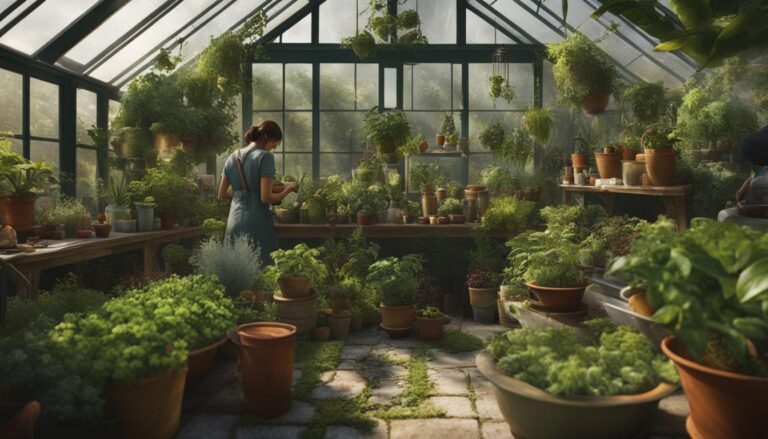
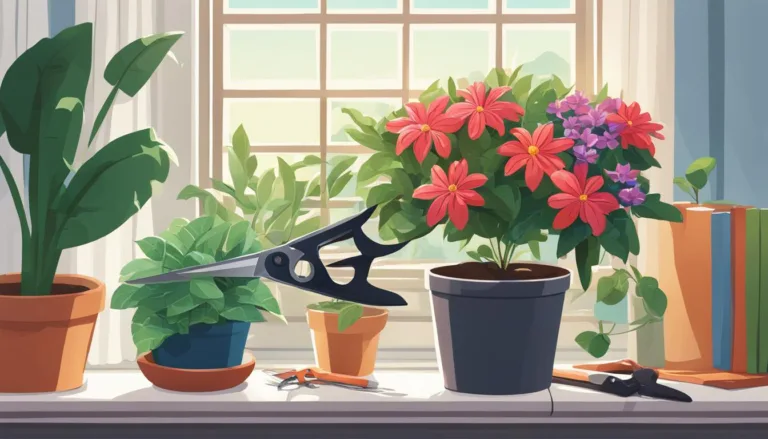
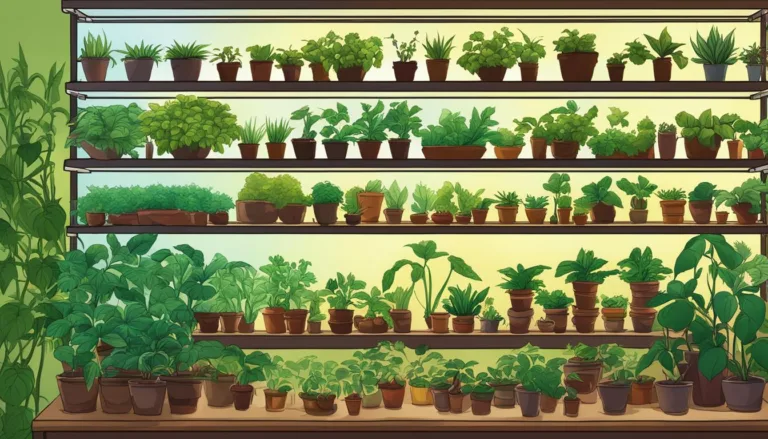

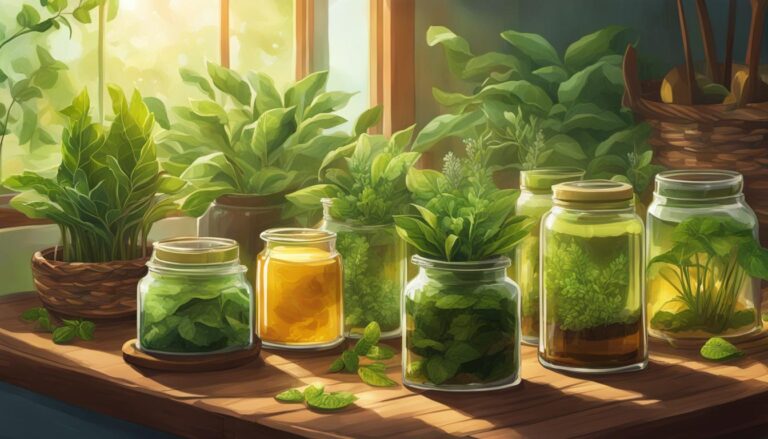
2 Comments
Comments are closed.